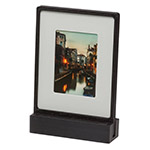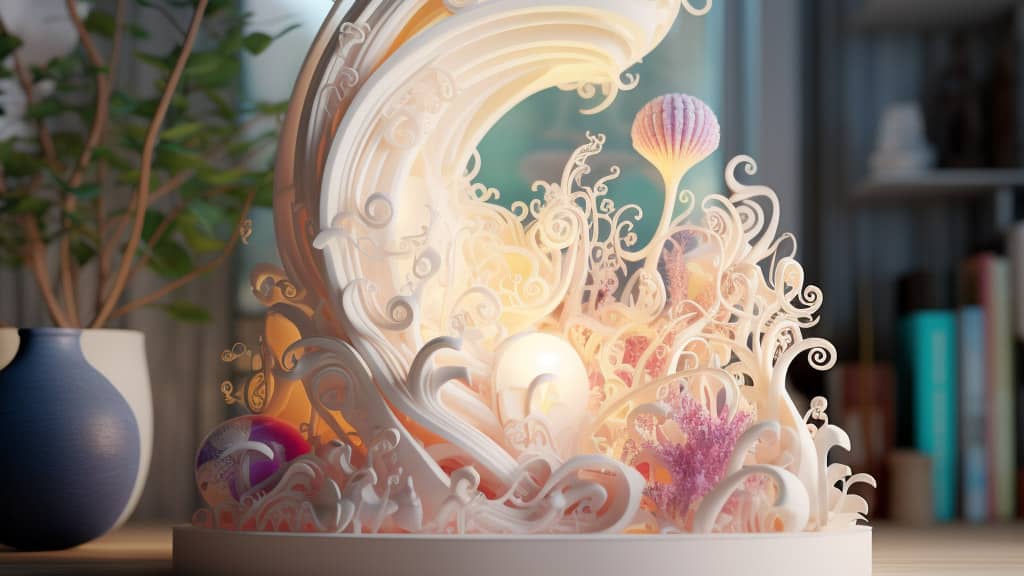Introduction: The Emergence of 3D Printing in the Art World
The art world is ever-evolving, and with the advancement of technology, innovative materials for 3D printed art have become a game-changer. 3D printing technology has opened a new realm of possibilities for artists, allowing them to create intricate and mesmerizing pieces that were once impossible to achieve. In this article, we’ll dive into the world of 3D printed art, exploring the unique materials and techniques that are shaping this revolutionary movement.
Unique Materials for Striking Visual Effects
3D printing art techniques have come a long way since their inception, and now artists are experimenting with a wide range of materials to achieve astonishing visual effects. Some of the most fascinating materials include:
- Polished Bronzed-Silver: This metal composite material offers a stunning bronze finish, adding a sense of antiquity to 3D printed sculptures. The polished surface enhances the depth and visual appeal of the artwork, creating a mesmerizing interplay of light and shadow.
- Sandstone: With the ability to mimic the texture and appearance of natural stone, sandstone provides an organic, earthy quality to 3D printed art pieces. Its versatility allows artists to create lifelike sculptures, intricate architectural models, and visually striking abstract pieces that evoke the beauty and complexity of natural rock formations.
- Porcelain: Delicate and refined, porcelain allows for the creation of intricate, high-resolution art pieces that are both beautiful and durable. Its smooth surface and translucency make it an ideal material for creating finely detailed figurines, exquisite jewelry, and delicate decorative items that showcase the artist’s skill and attention to detail.
- Multicolor Resin: By incorporating multiple colors into a single print, artists can create vibrant, eye-catching pieces with smooth color transitions and striking patterns. This innovative material enables the production of complex, multilayered artworks that captivate the viewer and push the boundaries of 3D printing technology.
- Conductive Filament: Artists can now integrate electronic components into their 3D printed art pieces using conductive filaments. These materials allow for the seamless incorporation of lights, sensors, and other interactive elements, bridging the gap between art and technology to create truly immersive and engaging experiences.
These unique materials not only enable artists to achieve striking visual effects, but they also challenge traditional notions of what is possible in the world of art. By harnessing the power of 3D printing technology and experimenting with these innovative materials, artists can create groundbreaking works that captivate and inspire audiences around the world.
Eco-Friendly and Sustainable 3D Print Art Materials
As the world moves towards a more environmentally conscious future, artists are embracing eco-friendly and sustainable materials for their 3D printed art. These innovative materials not only reduce the environmental impact of art production but also offer unique aesthetic qualities that can enhance the overall visual appeal of the artwork. Some examples of these materials include:
- Wood Filament: Composed of recycled wood fibers and biodegradable polymers, wood filament offers a sustainable alternative to traditional plastics. Its natural texture adds warmth and authenticity to 3D printed art pieces, allowing artists to create works that evoke the charm of traditional woodcarvings while harnessing the precision and flexibility of 3D printing technology.
- Biodegradable PLA: Derived from renewable resources like cornstarch, PLA (Polylactic Acid) is a biodegradable and eco-friendly material that is becoming increasingly popular among 3D print artists. With a wide range of colors and finishes available, PLA enables artists to create visually striking and environmentally responsible art pieces that can be enjoyed by future generations.
- Algix 3D: Made from a combination of algae and PLA, Algix 3D is a groundbreaking material that not only helps reduce the environmental impact of 3D printing but also provides a unique aesthetic to art pieces. The algae content gives the material a distinctive texture and color variation, allowing artists to create organic-looking and sustainable artworks that stand out from the crowd.
- Recycled PET: By using recycled PET (Polyethylene Terephthalate) filaments, artists can give new life to discarded plastic waste and turn it into stunning 3D printed art. This eco-friendly material is available in various colors and textures, offering artists a sustainable and versatile medium for their creative endeavors.
- Hemp Filament: Produced from the fibers of the fast-growing hemp plant, hemp filament is a renewable and biodegradable material that offers an eco-friendly alternative to traditional plastics. Its unique texture and natural appearance make it an attractive choice for artists seeking to create sustainable and visually engaging art pieces.
By incorporating these eco-friendly and sustainable materials into their 3D printed art, artists are not only making a positive impact on the environment but also demonstrating the potential of these innovative materials to create beautiful and thought-provoking works of art. As we continue to explore the possibilities of 3D printing technology, the use of sustainable materials will play a vital role in shaping the future of art and our planet.

The Future of Art: Blending Technology and Creativity
As 3D printing technology continues to advance, we can expect to see even more innovative materials and techniques revolutionizing the art world. Artists will be able to push the boundaries of their creativity further than ever before, exploring new dimensions and possibilities within their work. The fusion of art and technology promises to usher in a new era of artistic innovation that will not only captivate audiences but also redefine what is considered possible in the realm of art. Some exciting developments we can anticipate include:
- 3D Printed Paintings: By utilizing cutting-edge color mixing techniques and layering methods, artists can create 3D printed paintings that boast incredible depth and realism. These masterpieces will challenge the traditional notions of painting, incorporating sculptural elements and intricate textures that redefine the concept of a two-dimensional canvas.
- Kinetic Sculptures: 3D printing technology will enable artists to incorporate movement and interactivity into their sculptures, creating dynamic pieces that respond to their environment and engage with their viewers. These kinetic sculptures will offer a unique sensory experience, blurring the lines between art, technology, and human interaction.
- AI-Generated Art: The integration of artificial intelligence (AI) and 3D printing technology will pave the way for AI-generated art, where algorithms and machine learning tools collaborate with human artists to create unique and thought-provoking works. This partnership between man and machine will redefine the creative process, offering exciting new possibilities for artistic expression.
As we forge ahead into this thrilling and inspiring future, the artistic landscape will continue to evolve, driven by the integration of technology and creativity. The innovative materials and techniques made possible by 3D printing will unlock new levels of artistic expression, allowing artists to push the boundaries of their imagination and create groundbreaking works that challenge and captivate audiences around the world.
Conclusion: Embracing the 3D Printing Art Revolution
The introduction of innovative materials for 3D printed art has undoubtedly transformed the art landscape, offering artists an unprecedented level of creative freedom and allowing them to produce pieces that were once unimaginable. As we continue to explore the exciting world of 3D printing, we can expect to see even more groundbreaking art pieces that challenge the traditional boundaries of artistic expression.
Ultimately, the marriage of art and technology through 3D printing has brought forth a new era of artistic innovation. By embracing the unique materials and techniques available, artists are not only contributing to the evolution of the art world but also paving the way for a more sustainable and environmentally-conscious future. As art lovers and 3D print enthusiasts alike, let’s celebrate the beauty and ingenuity of these pioneering creations and eagerly anticipate the wonders yet to come.
Sculpting the Future: How 3D Printing is Transforming the World of Sculpture
The intersection of traditional art and 3D printing: a creative fusion



